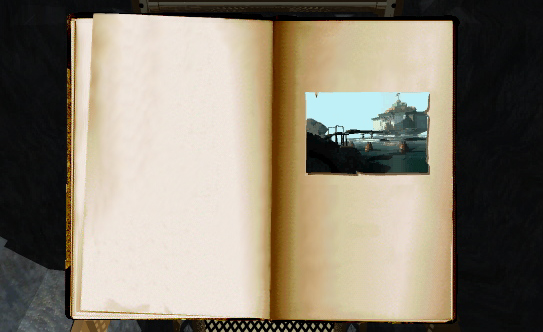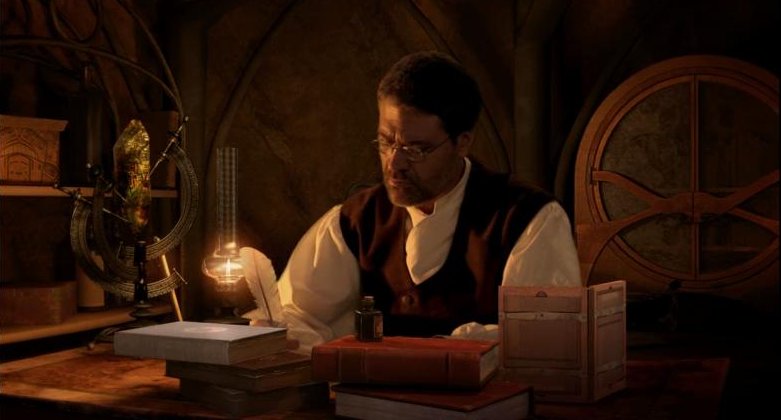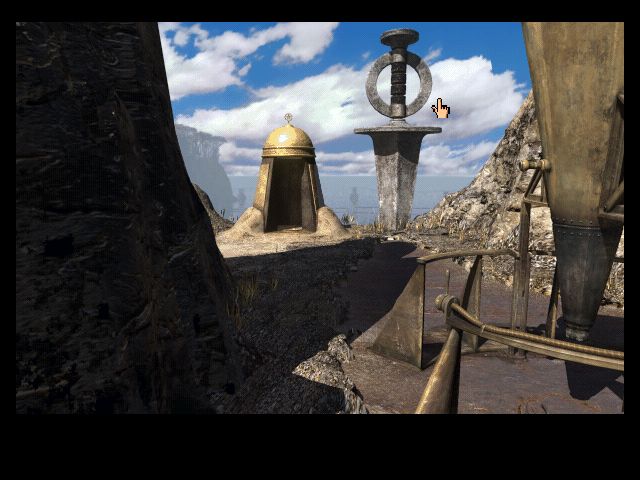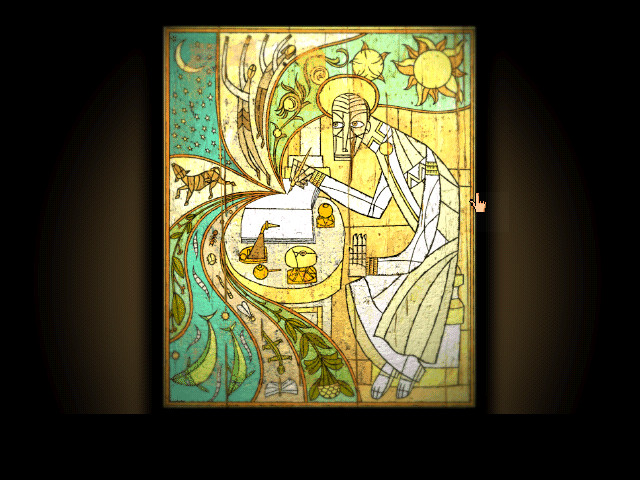Part 23: Lore: The Art
The ArtOr, Reading Rainbow was more literal than you thought.

The central conceit, the focus of the Myst series is what they call the Art, or the writing of Linking Books. Putting words to paper and then being able to visit, in person, the place you just described.
The important thing to remember, though, is that for the game devs, the Art as a concept is more of a tool than a science. The rules for the Art serve more to reflect the characters, and from game to game and novel to novel there have been little inconsistencies largely explained as, “This is what the devs/author thought would be interesting”. Not to say it’s a wild mess of ‘magic’ like, say, the Force, but it does tend to unravel a bit under close scrutiny.
First, a little vocabulary.
The Art: the practice of writing those wacky books that lead to other worlds, created by the D’ni civilization.
Age: General label for a world/universe written in a book, e.g. Mechanical Age, Gehn’s Fifth Age, the Age of Releeshan
Descriptive Book: The main book and starting point for writing an Age, generally thick and the subject of plenty of editing when writers want to screw with and/or fix worlds.
Linking Book: Slimmer, easier to carry cliff notes versions of Descriptive Books. Basically enough details to specify an age to go to, but you can’t really edit worlds with them.
Link/Linking: The process of traveling to an Age using Descriptive or Linking Books.

The basics of the process are pretty straightforward. You get some special paper and some special ink, and you describe a world in a special language. Write ‘island’, you’ll go to an island. Write ‘there are red flowers with yellow pistils growing in large fields’, and they’ll be there to. You generally want to add things like ‘contains atmosphere that’s about half inert gasses and a fair portion of oxygen’ unless you’re feeling adventurous and have appropriate gear.
As you write, the picture at the front will change and alter according to your details. This is generally helpful for a spot check before visiting, as you’ll be able to see if everything is on fire or if there’s solid ground before you enter. Once finished, it’s generally time to visit.
You do not, under any circumstances, forget a linking book to return home. You cannot get back without one, since it’s nearly impossible to write a good linking book without the descriptive book to reference. Another little quirk of the process is that the book you use to link is left behind. Anything you’re carrying or wearing travels with you, but the book itself will drop to the ground after you leave. If you don’t want people using the door after you, you generally should hold the book over a fire or something before linking.
And, rather importantly, you can edit worlds after the fact. Atrus is doing it off screen throughout the game, just trying to keep Riven together. Or you can try something extravagant. The Age defining boat of Stoneship, growing out of the rocks of the island, was an attempt by Atrus to write a boat into the Age to help the locals.

A talented writer could even write in a giant dagger that plummets out of the sky at a precise time and location, causing much sound and fury that forever changes an Age.

It is, without a doubt, a powerful ability, and furthermore one that can be taught. But it’s not without its limitations.
Certain care must be taken when writing and editing Ages. Lack of care while writing a Descriptive book can lead to an unstable age, and imprecise editing can create contradictions in an age, which can lead to disaster, and in bad situations, breaking the Link and causing the book to switch to a different but similar world. To wit, in the words of Myst Continuity guy Richard Watson (and a lot of thanks to oldskool for finding the quote)
Richard Watson posted:
Observation is the key to knowing whether an addition to a Book will be a change (further defining the current Age) or a contradiction (forcing a link to similar, but different Age). Quantum theory explains why all the Ages a writer can describe already exist (Atrus is right, Gehn is wrong), and tells why observation is so critical. It also shows that science fact is much stranger than science fiction.
A summary of the events of Gehn’s 37th Age in the tie in novel, Book of Atrus might demonstrate this principle.
---
When Atrus lived with Gehn and learned from him, Age 37 was the first inhabited age Atrus was allowed to visit. The 37th Age was another of Gehn’s attempts to restore the D’ni, again by declaring himself a God to the inhabitants and trying to reform them into a copy of the D’ni civilization. There was a problem though. The natives had previously revered a dense, entrapping fog that would surround the island on regular intervals, and Gehn, who had only been a god for a mere decade, couldn’t possibly compete. So Gehn, feeling piqued by the idea something might be revered over him, sits down with the descriptive book and writes “The seas are warm”. It works immediately, and Gehn takes Atrus with him to witness his immense power over every aspect of the Age.
But Gehn’s ill-considered edit soon proves harmful. When Atrus and Gehn return, they discover the seas have dried up, leaving cracked sea beds that glow with fire from beneath. The rain has stopped entirely, and the inhabitants are becoming desperately short of water. Gehn is ready to simply discard the Age, but Atrus begs him to make an attempt at fixing it. Gehn sighs, takes out his pen, and writes “delete the previous” next to his last entry.
But when Atrus goes back to visit, he finds something strange. The island is largely the same, and the plants are familiar. But the constructions, the changes and buildings Gehn made were gone entirely. Gehn’s final change had proven a bridge too far. The new Age the book linked to was another place entirely, one that had never known him or his son Atrus.
Atrus returned and told Gehn of this development, and Gehn decided to burn the book, citing it as ‘defective’. Neither Atrus nor Gehn ever returned to the original 37th Age.
---
Gehn writes unstable ages not because he is lazy, but because he is proud. His certainty that he is creating worlds means he doesn't see details of an Age that aren't in his own writing. His reverence of the D'ni leads him to lift phrases and terms wholesale from old Descriptive books and place them in his own. Atrus describes the process as taking a dozen masterful tapestries, hacking them to bits, and putting the pieces back together with no eye for design or composition. He writes in a horrific inversion of impressionism; each piece individually demonstrates mastery, but as a whole its an ungodly mess. And his unwillingness to admit that he, the last hope of the D'ni, might be seriously flawed, kept him from correcting his mistakes.
Which isn't a new problem. Even at its most benign the Art offers incredible power to its practitioners, and Gehn was not the first nor the last to abuse it. One man used it to exert power over dozens of populations. A civilization could use it to become an empire that surpasses the wealth and power of any civilization you could name on Earth.
And that civilization was the D'ni, which will be discussed in my next Lore post. See you then!